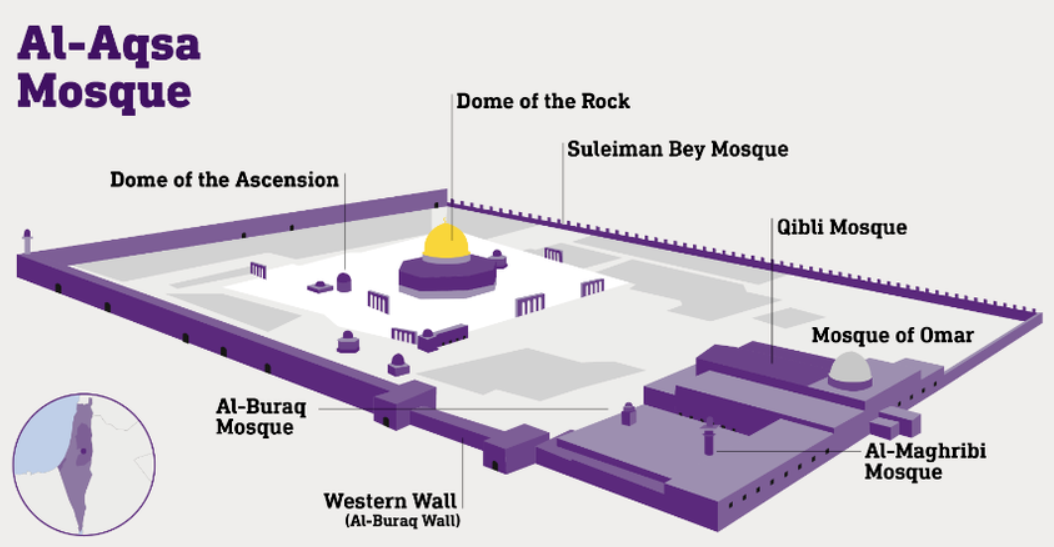The Temple Mount still exists today, and is known as the Noble Sanctuary by Muslims. Except for a brief period of Christian occupation during the Crusades, Islamic holy sites have occupied the Temple Mount since the seventh century C.E. The entire complex is considered Islam’s third holiest site.
 According to the Qur’an, Muhammad visited several sacred locations during his famous Night Journey, including the Furthest (i.e., al-Aqsa) Mosque. Muslims believe that the Furthest Mosque was the Jerusalem Temple. Consequently, they built their own version of a temple where they believed the Temple once stood: the Dome of the Rock. The contemporary Dome shares earlier Temples’ concentric areas of increasing holiness. The innermost section contains an exposed portion of the mountain. Many believe that this exposed rock is the Foundation Stone that had previously been part of the Holy of Holies in the First and Second Temples.
According to the Qur’an, Muhammad visited several sacred locations during his famous Night Journey, including the Furthest (i.e., al-Aqsa) Mosque. Muslims believe that the Furthest Mosque was the Jerusalem Temple. Consequently, they built their own version of a temple where they believed the Temple once stood: the Dome of the Rock. The contemporary Dome shares earlier Temples’ concentric areas of increasing holiness. The innermost section contains an exposed portion of the mountain. Many believe that this exposed rock is the Foundation Stone that had previously been part of the Holy of Holies in the First and Second Temples.
The Aqsa Mosque occupies the southern portion of the Mount, where the Royal Stoa stood in Herodian times. Other monuments have also been built on the esplanade. Near the Dome of the Rock are smaller domes that mark events from the Night Journey, including the Dome of the Prophet and the Dome of the Ascension. Other domes mark unrelated sites of religious significance, such as the Dome of the Chain, and the Dome of Spirits. These monuments are beyond the scope of this project.
